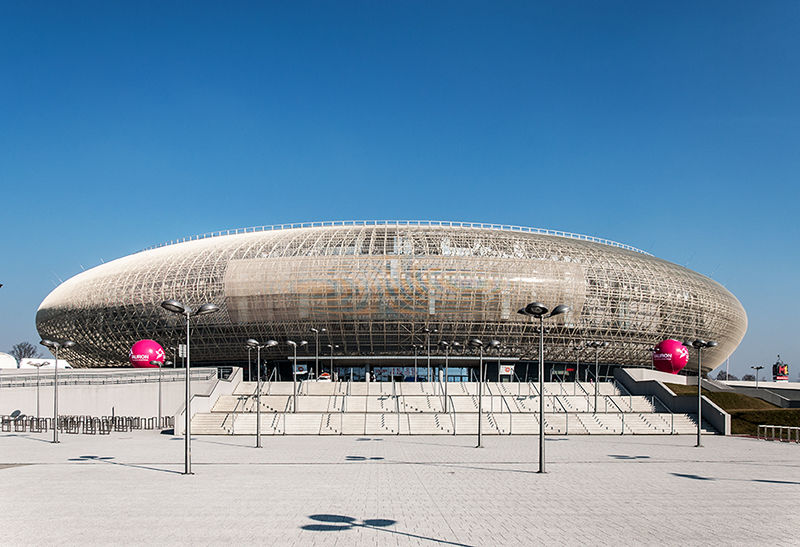KRAKOW, Poland — Poland is one of the world’s most pervasively Catholic societies and Krakow, its cultural capital, is also the city of St. Pope John Paul II, so there’s more than a little ferment here over the World Youth Day that began July 26 and ends July 31, a massive gathering of pumped-up Catholic youth from around the world that’s been referred to tongue-in-cheek as the “Catholic Woodstock.”
It’s a sign of the times that part of the vibe about the event is fear over the possibility of a terrorist incident, and on Tuesday Polish Interior Minister Mariusz B≈Çaszczak insisted that “World Youth Days are not threatened” — although he did confirm that in preparation for the event, Poland has temporarily reinstated controls on its borders with other EU members.
Krakow is also, however, a highly cosmopolitan and eclectic milieu, in which no one event, however vast in scale, can completely dominate urban life.
Here’s one proof of the point: When English-speaking pilgrims starting arriving, one of the venues to which they’ll be funneled is downtown’s Tauron Arena, which will be christened “Mercy Center” for the week and will host a line-up of catechists, spiritual and devotional experiences, and musical performances.
Locals barely had time to clean the arena out and get it ready after its last big happening, which took place on Saturday: A Black Sabbath concert.
(One wonders if Pope Francis has been briefed that Black Sabbath was, in a sense, his warm-up act.)
Here, then, a few sights and sounds from Krakow in the run-up to the tidal wave of youth that will begin washing through the city over the next few days.
› Getting Around: To handle the expected 1.5 million people who’ll be trying to move around the city when World Youth Day reaches a crescendo, Krakow’s municipal transportation agency has introduced a special ticket valid for all bus and tram lines, without any limit on time or number of journeys, that costs a little under $4.
To handle the inevitable congestion such a sprawling number of visitors is fated to cause, locals have been offered the chance to park their cars in the underground parking lot beneath the national museum. In exchange for free parking, the deal is that they basically agree to abandon their cars for the World Youth Day period, in an effort to keep the streets at least semi-passable.
› Safety: Several measures have been taken by the city to try to assure pilgrim safety, including installing new bright red lifebuoys on four of Krakow’s main bridges in case someone falls into the water and needs help. They’re accessible to pedestrians and can be easily yanked off and tossed into the water for someone in distress.
The cost of purchasing and installing the lifebuoys reportedly was $13,000 — which given the budget for something like World Youth Day, at the end will probably seem like a rounding error.
› Abortion protest: Ironically, Krakow’s police force got a trial run in crowd control for World Youth Day last weekend with a large protest rally in the city center over a proposed reform to Poland’s restrictive 1993 abortion law, which makes the procedure possible only in limited situations such as a threat to the mother’s life and several fetal abnormalities.
A bill currently before parliament would remove those exceptions and also criminalize participation in abortions, including going abroad to seek one. It comes as the result of a citizen’s initiative sponsored by an anti-abortion group called Fundacja Pro, and has the support of both influential elements of the hierarchy as well as Prime Minister Beata Szyd≈Ço of the ruling Law and Justice party.
The protest against the bill was called “Nie dla torturowania kobiet!” (“No to torturing women!”), staged simultaneously in Krakow and fourteen other Polish cities. It was organized by a Polish feminist group called Dziewuchy dziewuchom — which, more or less, means “Wenches to Wenches.”
A similar proposal to completely ban abortion was rejected 206-178 by the Sejm (the legislative lower house) in September 2015, when it was controlled by the more socially liberal PO party. Polling conducted in 2014 revealed that, while most Poles oppose abortion on demand and even more take a personal moral stand against it, the vast majority of the population supports the current exceptions.
› Mercy exhibit: Krakow’s National Museum is hosting a special exhibit organized both as part of the World Youth Day and the Jubilee of Mercy. It features nearly 100 works, mainly from Italian collections, whose leading theme is “Mary, Mother of Mercy.”
The line-up includes works by prominent Italian, French, Dutch and German artists such as Donatello and Mantegna, who were active from the 14th to the 18th century.
It’s the only official exhibition being held as part of the World Youth Day in Krakow 2016, sponsored by the National Museum in Krakow in cooperation with the Vatican’s John Paul II Foundation for Youth. Similar exhibits have been put together for other World Youth Days in museums in the cities which host these gatherings, including the Colorado History Museum in Denver, the Metropolitan Museum in Manila, Royal Ontario Museum in Toronto and the Museo del Prado in Madrid.
› LEGO: For WYD participants who get their fill of traditional pilgrimage experiences, there’s another option for something to see: The world’s largest LEGO brick show, currently on display at the Galeria Kazimierz, one of the city’s largest shopping malls.
With a total surface area in excess of 1700 square meters, the LEGO artifacts include “Air Force One,” the world’s largest LEGO-built plane; Star Wars ship replicas made of LEGO; and “Robert Waldow,” the world’s largest man built of LEGO.
What the collection apparently does not yet have is a St. John Paul look-alike, but it’s hard to imagine that with all that LEGO sitting around and a burgeoning flash-mob of John Paul II devotees, one won’t be assembled by the end of the month.

